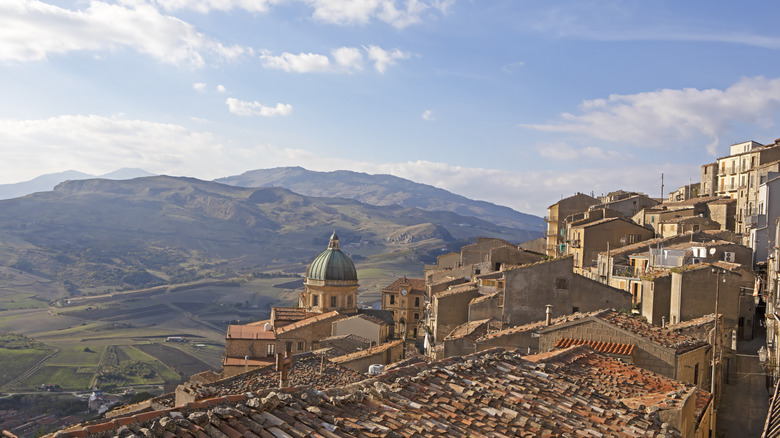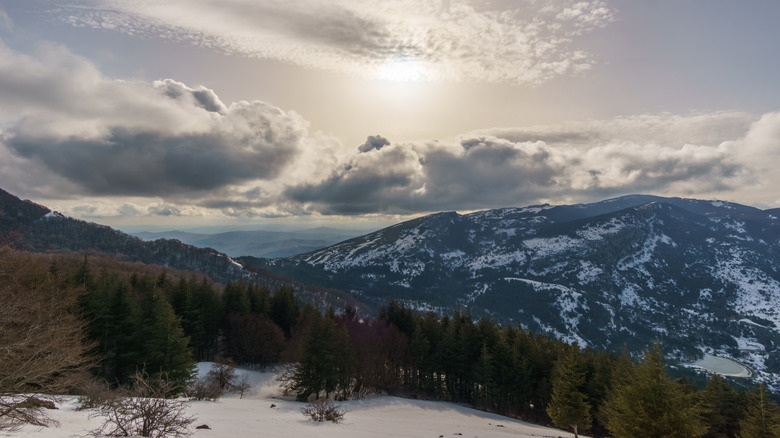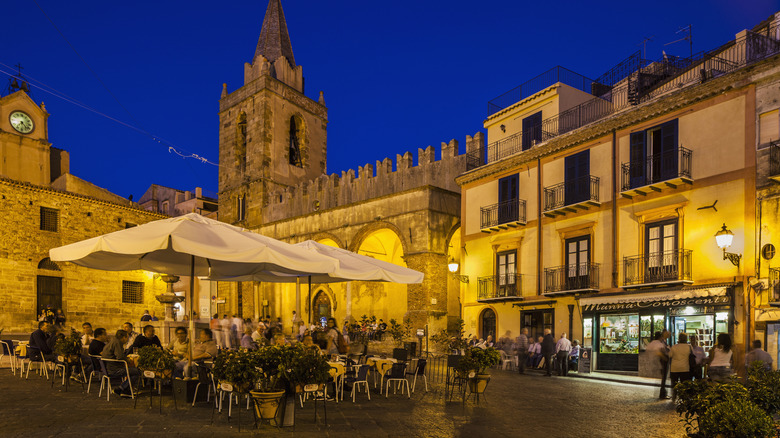This Stunning Italian Mountain Region Is A Peaceful Escape From Sicily's Crowded Beaches
Sicily is one of the most beautiful parts of Italy, a weird and wonderful island that hangs off the bottom of the country like a ball being punted by a boot. This bustling, colorful island boasts some of the best food in Italy and is renowned for its remarkable ancient ruins, gorgeous coastline, and some of the best beaches in Italy. In the last few years, it has become even more famous thanks to its appearance on the HBO smash hit "The White Lotus," and Sicily's combination of faded grandeur, decadent luxury, and stunning natural beauty makes it one of the dreamiest places for a European beach escape.
However, popularity has its drawbacks, and many of Sicily's best beaches and most famous historic sites are now overwhelmed with visitors. It can be hard to visit Taormina, Palermo, or Syracuse without encountering crowds of other tourists, especially if you want pristine beaches and gorgeous coastal views. But Sicily isn't just opulent palazzos, Greek amphitheaters, and golden-sand beaches. For a peaceful escape, it is worth heading into the mountains to explore an alternative side of Sicily.
The Madonie Mountains are located in the north, a world away from the more touristy east and south. Overlooked by many travelers, this fantastic nature reserve is filled with excellent hiking paths, picturesque medieval villages, and breathtaking mountain landscapes. The nearest major town is Cefalu, on the coast about 30 miles away. Palermo, the Sicilian capital, is about 60 miles away, and the nearest airport is Palermo International Airport, 75 miles away.
Towering peaks and monumental trees
The Madonie Natural Park contains some of the highest peaks on the island, include the staggering 6,492-foot Pizzo Carbonara, the second highest on Sicily after Mount Etna. While most people think of Sicily's sun-drenched beaches, the Piano Battaglia ski resort offers fresh powder during the winter months, with around 3 miles of slopes, and ski-touring and mountaineering opportunities on Monte Ferro and the ice-covered ravines of Monte Quacella.
Once the snow clears, the paths and trails open up the Madonie Mountains to hikers and walkers, as well as for horse riding, quad biking, and mountain biking. A half-day trail to discover Piano Pomo's giant holly trees is a highlight for many, and more adventurous explorers can reach the summit of Pizzo Carbonaro on a full-day trek, and enjoy 360-degree views of the entire island. For families, the Parco Avventura Madonie is a great entry point into this wonderful natural environment, a woodland adventure park that lets kids explore the great outdoors safely.
For anyone interested in the natural world, the Madonie Natural Park is one of the richest areas of biodiversity in the entire Mediterranean, with a remarkable range of rare plants, trees, and animals to discover. Watch out for Madonie firs, which only grow in the Vallone della Madonna degli Angeli, and the 1,000-year-old oak tree near Piano Pomo, as well as the incredible variety of orchids that grow across the park. In terms of wildlife, a wide range of creatures call Madonie home, including deer, wild boar, wild cats, porcupines, red kites, golden eagles, and griffon vultures.
Charming medieval villages and unique culinary traditions
The Madonie region has a vibrant history and culture. The name, Madonie, is reputed to have come from an ancient feud, and the area was ruled for centuries by a powerful noble family, the Ventimiglia, which had a long-lasting impact on the way of life here. This is most deeply felt in the tiny medieval villages scattered around the region's mountain peaks and ravines. The most beautiful of these is Gangi, officially one of Italy's prettiest villages, which boasts historic Norman towers and dramatic panoramic views. You can even see Mount Etna on a clear day! The 14th-century castle in Castelbuono is also well worth a visit, but in almost every village in Madonie you'll find medieval towers, Arabo-Norman churches, and sleepy, laid-back charm.
The region also boasts a distinct and unique cuisine, recognizably Sicilian but with its own twist. Madonie culinary traditions lean heavily on olive oil, mushrooms, hazelnuts, and ricotta and pecorino cheese, with the unusual additions of badda beans and pipiddu peppers, which only grow in the area. The unmissable food highlight to try is the sfoglio madonita, a cake made with paper-thin pastry, tuma cheese, candied pumpkin, and chocolate.
And a trip to the Madonie Mountains doesn't mean sacrificing your Sicilian beach holiday! Some of the best beaches on the island can be found in and around Cefalu, just a short drive away from the nature reserve, so you can combine exploring this amazing mountain landscape with a blissful dose of sun, sea, and sand.


